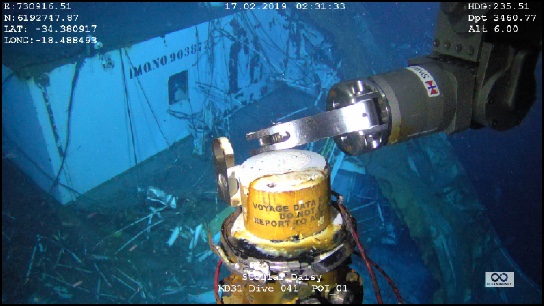DNV GL hits out at slow accident reporting

At the traditional press event the day before the Nor-Shipping exhibition opens, class society DNV GL hit out at the lengthy delays in maritime accident reporting.
Knut Ørbeck-Nilssen, CEO of DNV GL’s maritime division, cited the sinking of the Stellar Daisy very large ore carrier (VLOC) in March 2017 as a prime example. The converted bulker went down in the South Atlantic with the loss of 22 lives, becoming one of the worst dry bulk accidents of the decade. It took the ship’s flag, the Marshall Islands, fully two years to publish its accident report, something Ørbeck-Nilssen said was too long. DNV GL conducted its own investigations in the wake of the VLOC sinking as it had some converted ore carriers in its fleet. It had the preliminary findings ready by the end of 2017.
“I see no reason why it was not possible to publish Stellar Daisy preliminary findings earlier,” Ørbeck-Nilssen said, adding: “We have to take that fast learning onboard to save lives.”
Ørbeck-Nilssen said two years could not be justified especially if another similar accident happened in the meantime.
Ørbeck-Nilssen used the press event to stress the importance that shipping addresses safety issues, which have been pushed to the background in recent years with environmental regulations taking centre stage.
Statistics from the press conference show that while shipping losses have declined by 38% over the past decade, still more than 75% of incidents relate back to human error.
DNV GL has put forward five proposals to improve safety in shipping, calling on the industry to develop holistic regulations with safety at the core, improve safety culture, apply barrier management inspired by other industries most notably aviation and oil and gas, increase transparency on safety and to unlock data silos for deeper insights to incidents and near-misses.
The class society’s group president and CEO, Remi Eriksen, also spoke with the press on Monday focusing on decarbonisation and digitalisation.
Eriksen said IMO’s 2030 decarbonisation targets were reachable with existing technology but 2050 goals – to slash emissions by 50% compared to 2008 levels – would require new designs that give owners flexibility to switch fuels during a ship’s lifetime. Eriksen echoed Orbeck-Nielsen saying shipping cannot afford to work in silos to meet decarbonisation targets, calling for greater cooperation.
When pushed on the matter, Eriksen reckoned gas in some form would be the most likely way for shipping to make its 2050 targets.
Splash is reporting from Nor-Shipping all week.
